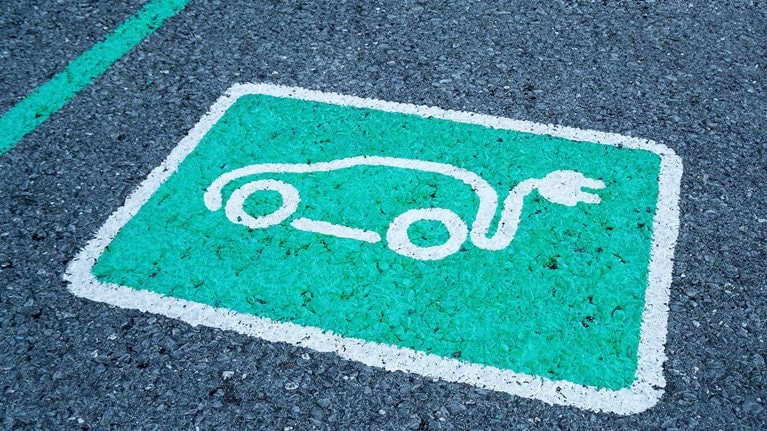Ask any electric-vehicle (EV) shopper: poor range and limited attractiveness have long been the two biggest bottlenecks to EV uptake.
Now, however, with more than 350 new, feature-laden EV models to debut by 2025, with ranges that increasingly top 200 miles, these attributes pose less of a hurdle. Instead, if consumers purchase EVs at the expected rates in the next five to ten years, a lack of charging infrastructure could become an obstacle to EV adoption.
Recognizing the charging-capacity gap
Consumers rank not having enough access to efficient charging stations as the third most serious barrier to EV purchase, behind price and driving range. That’s according to McKinsey’s 2016 EV consumer survey of buyers considering battery-powered EV in China, Germany, and the United States. With EV prices declining and ranges expanding, charging could soon become the top barrier.
McKinsey’s base-case scenario for EV adoption suggests approximately 120 million EVs could be on the road by 2030 in China, the European Union, and the United States (Exhibit 1). The aggressive-case scenario could see that double. Along with different levels of EV adoption across regions, structural considerations will make charging-station demand highly localized. For example, compare a city like Los Angeles, with many single-family low-rise homes that have parking garages, with Manhattan, where high-rise multi-unit apartment dwellings prevail. These two cities will have extremely different EV charging-infrastructure needs.

Big energy demand, but where to charge?
Total charging-energy demand for the EV vehicle population across China, Europe, and the United States could grow dramatically from 2020 to 2030, increasing from roughly 20 billion kilowatt-hours to about 280 billion kilowatt-hours (Exhibit 2). This estimate reflects assumed EV adoption, total miles driven per year, and the average kilowatt-hours required per mile (a miles-per-gallon equivalent). While 280 billion kilowatt-hours sounds like a big number, it represents less than 10 percent of current US energy demand while reflecting the requirements of all four markets.

Unlike traditional, internal-combustion engine (ICE) vehicles, which typically only refuel at gas stations, EVs can recharge at multiple locations in multiple ways. Our model analyzes charging across four use cases that all assume wired plug-in chargers: at home, at work, in public, and on highways for long-distance trips. Other use cases and technologies are emerging. For example, wireless charging or streetlight charging, while potentially viable, are not included in this analysis.
The energy consumed at home and in the workplace will depend on the number of chargers installed and the amount of energy those chargers provide. Home charging will depend on whether EV owners have garages and on their income demographics. Charger penetration at work will predominantly reflect employer choice or regulatory requirements.
However, people do not only use their vehicles to drive to and from work. Approximately 3 to 6 percent of total miles driven involve long-distance trips that average more than 100 miles. Even with a full charge leaving home, most of today’s EVs cannot make that round-trip without recharging. This makes the case for long-distance chargers.
Combined home, work, and long-distance charging could in theory cover an EV owner’s entire energy demand. While potentially true for drivers who use an EV as a second car only for commuting or errands, this scenario is unlikely at scale for several reasons. For instance, drivers without chargers at home or work must charge in public; drivers who exceed their battery range on a given day may need to visit fast-charge stations; and drivers who forget to charge at home or don’t have home chargers must rely on other options, making the case for public charging.
From home to work to public charging
People tend to follow a charging hierarchy that starts at home. Most individual passenger cars remain parked for eight to 12 hours at night, and home charging can be easy and often cheaper than charging elsewhere. The reasons: in most countries, residential electricity is cheaper than commercial or industrial electricity, and most charging can happen overnight when off-peak electricity prices are lower.
In a home-centered base case, approximately 75 to 80 percent of EV owners in the United States and European Union should have access to home charging, which should provide up to 75 percent of their energy needs in 2020 (Exhibit 3). The high penetration of single-family homes in states with high EV adoption will drive this demand, particularly in California and the Pacific Northwest. China should have much lower penetration of home charging because there are fewer single-family homes. Even when considering public-centered alternatives, the importance of home charging will remain highly relevant in the United States.

In the European Union, as EVs go mainstream, charging will likely shift toward public options and away from the home over time, with the share of home charging declining from approximately 75 percent in 2020 to about 40 percent by 2030. That’s because more middle- and lower-income households without home-charging options will buy EVs from 2020 onward. In China, public charging will dominate and increase in importance over time, going from 55 to 60 percent in 2020 to approximately 80 percent by 2030. The structural limitations of highly dense urban cities, which have larger proportions of on-street and large-commercial-garage parking, are the catalysts for increased public-charging demand.
In the near term, low levels of public charging should therefore not significantly hinder EV adoption in the European Union and United States. The situation looks different for China, where over half of the energy will come from public sources. Furthermore, the importance of public charging will likely grow stronger by 2030, reinforcing the need for strategies based on target-market needs.
Would you like to learn more about the McKinsey Center for Future Mobility?
Choosing slow, fast, or superfast charging
The next question beyond where people will charge concerns the type of technology they will use. Three broad categories of EV charging infrastructure exist today:
- Alternate-current (AC) charging, also known as level 1 or level 2. In this system, an in-car inverter converts AC to direct current (DC), which then charges the battery at either level 1 (equivalent to a US household outlet) or level 2 (240 volts). It operates at powers up to roughly 20 kilowatts.
- DC charging, also known as level 3 or direct-current fast charging (DCFC). This charging system converts the AC from the grid to DC before it enters the car and charges the battery without the need for an inverter. Usually called direct-current fast charging or level 3, it operates at powers from 25 kilowatts to more than 350 kilowatts.
- Wireless charging. This system uses electromagnetic waves to charge batteries. There is usually a charging pad connected to a wall socket and a plate attached to the vehicle. Current technologies align with level 2 chargers and can provide power up to 11 kilowatts.
The kilowatt capacity of a charger determines the speed at which the battery receives electricity. AC level 1 and level 2 are most applicable for homes and workplaces because of the long periods cars remain parked and their lower cost: a simple level 2 for a home can cost as little as $500. DCFC chargers are most applicable in situations where time matters, such as on highways and for fast public charging.
Basic AC level 1 and level 2 power will overwhelmingly remain the dominant charging technology through 2030, providing from 60 to 80 percent of the energy consumed. Most of this charging will take place at homes, workplaces, and via slow-charge public stations (Exhibit 4). DCFC will likely play a much larger role in China, which requires more public-charging infrastructure.

Calculating charging’s dollars and cents
Based on charging profiles and available technologies, the industry could require approximately 40 million chargers across China, Europe, and the United States, representing an estimated $50 billion of cumulative capital investment through 2030 (Exhibit 5). The US alone will need a cumulative 13 million chargers and approximately $11 billion of investment by 2030. The European Union will need a cumulative 15 million chargers and roughly $17 billion of investment during the same period. In China, the numbers are a cumulative 14 million chargers and $19 billion of investment.

While most chargers—over 95 percent—will be in homes and workplaces from a charger-count perspective, the share of capital investment they represent is closer to roughly 70 percent of the total. This reflects the significantly higher cost of faster chargers. On average, a level 2 charger used in a home costs less than $1,000; one used in a workplace or in public can cost between $3,000 and $5,000. A DCFC starts at about $25,000 and, depending on the power capacity, can rise to more than $200,000 for each unit.

Subscribe to the Shortlist
McKinsey’s new weekly newsletter, featuring must-read content on a range of topics, every Friday
Currently, the business cases for home or workplace level 2 chargers are straightforward, given low up-front capital and operating expenses. Making the business case work for public DCFCs is more difficult. The reasons include higher up-front capital, higher operating costs, and currently low utilization. In the near term, this raises a critical question: Who will provide the necessary capital for public charging while utilization rates remain low, particularly in China where the need for public charging is higher?
As electric-vehicle demand looks increasingly likely to grow and EVs emerge as viable alternatives to ICE cars, an ecosystem of industries needs to stack hands on actions that can enable their broader use. Closing the charging gap is one such action, and resolving it will require a concerted, collaborative effort. That’s why finding the answers to the questions raised here should top the agendas of all stakeholders across the EV ecosystem, especially if charging access becomes the number-one impediment to EV penetration. Understanding specific local needs for early demand and adaptation will be the key to making effective targeted investments, matching demand and supply, and enabling quick returns on investments.
This article was originally published in August 2018; some facts and figures were updated in October 2018.


